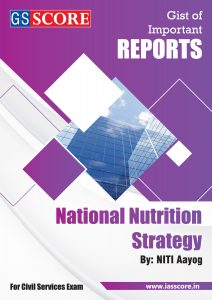Undernutrition is both a consequence as well as a cause of perpetuating poverty, eroding human capital through irreversible and intergenerational effects on cognitive and physical development. This intergenerational cycle of undernutrition, manifest as low birth weight, is compounded by gender discrimination and social exclusion.
Investing in nutrition constitutes the foundation for human development, by reducing susceptibility to infections, related morbidity, disability and mortality burden, enhancing cumulative lifelong learning capacities and adult productivity. Nutrition is acknowledged as one of the most effective entry points for human development, poverty reduction and economic development, with high economic returns.
Nutrition is central to the achievement of other National and Global Sustainable Development Goals.
High levels of maternal and child undernutrition in India have persisted, despite strong Constitutional, legislative policy, plan and programme commitments. Legislations such as the National Food Security Act 2013 mandating food and nutrition entitlements for children, pregnant and breastfeeding mothers with maternity support and the Infant Milk Substitutes, Feeding Bottles and Infant Foods (Regulation of Production, Supply and Distribution) Act 1992, and Amendment Act 2003 provide a strong policy framework for protecting, supporting and promoting nutrition interventions - especially during periods of greatest vulnerability for children and women.
A wide spectrum of national programmes contribute to improved nutrition outcomes, addressing both the immediate and the underlying determinants of undernutrition through nutrition specific and nutrition sensitive interventions. These include the Integrated Child Development Services, National Health Mission- including RMNCH + A, Janani Suraksha Yojana, Swachh Bharat including Sanitation and the National Rural Drinking Water Programme, Matritva Sahyog Yojana, SABLA for adolescent girls, Mid Day Meals Scheme, Targeted Public Distribution System, National Food Security Mission, Mahatma Gandhi National Rural Employment Guarantee Scheme and the National Rural Livelihood Mission among others.
Still the status of nutrition is poor in India. In the following report we are analyzing different dimensions related to the concept of Nutrition.
Index
1. Determinants of Undernutrition
2. Data on Nutritional Situation Analysis
3. National nutrition strategy Goals and Objectives
4. Guiding Principles for addressing Nutrition Issue
5. How to implement Nutrition Strategy Framework?
6. ICT enabled monitoring mechanism
7. Role of Different Ministries in Nutrition Management
8. Institutional Mechanism required





